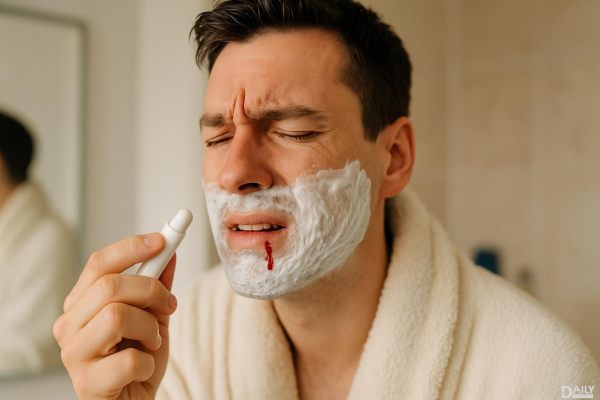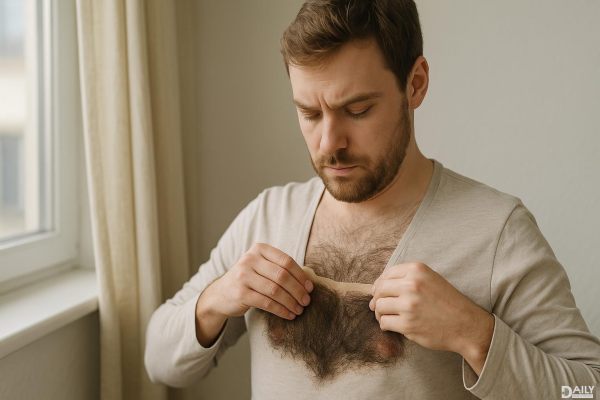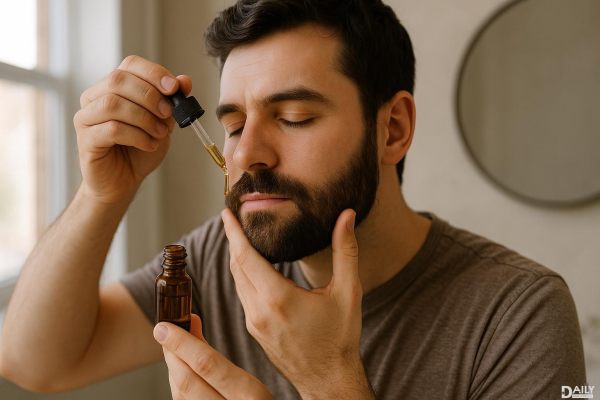Shaving can be a real pain—literally. If you’ve ever nicked yourself or ended up with razor burn, you know the struggle. But here’s the deal: stopping bleeding from a shave and achieving a smooth, irritation-free experience isn’t rocket science. It’s all about the right techniques, tools, and aftercare. Let’s dive into the secrets that’ll make your shaving routine a breeze.

First things first, preparation is key. Jumping straight into shaving without prepping your skin is like trying to run a marathon without stretching—it’s a disaster waiting to happen. Start by washing your face with warm water and a gentle cleanser. This helps to remove dirt, oil, and dead skin cells that can clog your razor and cause irritation. If you’re shaving in the shower, let the warm water soften your facial hair for a couple of minutes. The softer your hair, the easier it is to cut, which means less tugging and fewer nicks.
Not all razors are created equal. If you’re using a dull or cheap razor, you’re basically asking for trouble. Invest in a high-quality razor with sharp blades. Whether you prefer a safety razor, cartridge razor, or straight razor, make sure it’s clean and in good condition. For those with sensitive skin, a razor with fewer blades can actually be better because it reduces the risk of irritation. And don’t forget to replace your blades regularly—dull blades are the number one cause of cuts and razor burn.
Shaving cream or gel isn’t just a luxury; it’s a necessity. It creates a barrier between your skin and the razor, reducing friction and preventing irritation. Skip the canned foam and opt for a high-quality shaving cream or gel that’s designed for your skin type. If you’re feeling fancy, try a shaving brush to work up a rich lather. This not only feels amazing but also helps to lift the hairs for a closer shave. And whatever you do, don’t shave dry—your skin will thank you.
Here’s where most people go wrong: they shave like they’re in a race. Slow and steady wins the shaving game. Start by shaving in the direction of hair growth (with the grain) to minimize irritation. If you want a closer shave, you can go against the grain, but only after you’ve already shaved with the grain. Use short, gentle strokes and avoid pressing too hard—let the razor do the work. Rinse the blade frequently to prevent clogging, and if you feel any tugging, it’s time to switch blades.
Even the best shavers get nicks now and then. The trick is to stop the bleeding quickly and prevent infection. If you cut yourself, rinse the area with cold water to constrict the blood vessels and slow the bleeding. Apply a styptic pencil or alum block to the cut—these are lifesavers that stop bleeding almost instantly. If you don’t have those on hand, a dab of lip balm or even a small piece of tissue paper can work in a pinch. Just avoid using alcohol-based products, as they can sting and dry out your skin.
Your shaving routine doesn’t end when you put the razor down. Post-shave care is crucial for preventing irritation and keeping your skin smooth. Rinse your face with cold water to close the pores and remove any leftover shaving cream. Pat your skin dry with a clean towel—don’t rub, as this can irritate freshly shaved skin. Apply an alcohol-free aftershave or moisturizer to soothe your skin and lock in moisture. Look for products with ingredients like aloe vera, chamomile, or witch hazel, which are known for their calming properties.
Razor burn is the worst—itchy, red, and totally avoidable. To prevent it, make sure you’re using a sharp razor and shaving with the grain. Don’t go over the same area multiple times, as this increases friction and irritation. After shaving, avoid tight clothing or anything that rubs against your skin. If you do end up with razor burn, apply a cool compress to reduce inflammation and use a soothing lotion or gel to calm the skin. And next time, take it slow—your skin will thank you.
Exfoliation is your secret weapon for a smooth shave. By removing dead skin cells, you prevent ingrown hairs and ensure a closer shave. Use a gentle exfoliating scrub or a soft brush a couple of times a week, but avoid doing it right before shaving, as it can make your skin more sensitive. Exfoliating also helps to keep your pores clear, reducing the risk of breakouts and irritation.
Healthy skin is the foundation of a great shave. Keep your skin hydrated by drinking plenty of water and using a good moisturizer daily. If your skin is dry or flaky, it’s more prone to irritation and cuts. Look for moisturizers with ingredients like hyaluronic acid, glycerin, or ceramides, which help to lock in moisture and strengthen your skin’s barrier. And don’t forget to protect your skin from the sun—use a broad-spectrum sunscreen to prevent damage and keep your skin looking its best.
Shaving doesn’t have to be a battle. With the right prep, tools, and techniques, you can achieve a smooth, irritation-free shave every time. Remember, it’s all about taking your time and treating your skin with care. So next time you pick up that razor, channel your inner pro and shave like you mean it. Your skin will thank you, and you’ll be rocking that smooth, clean look with confidence.
























